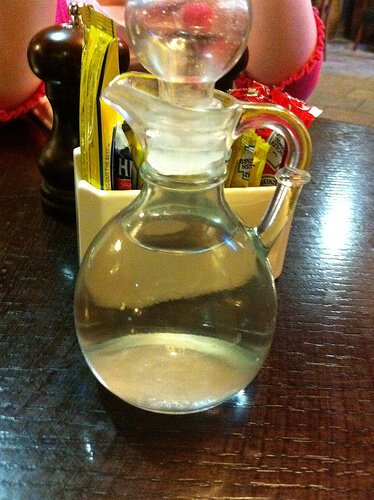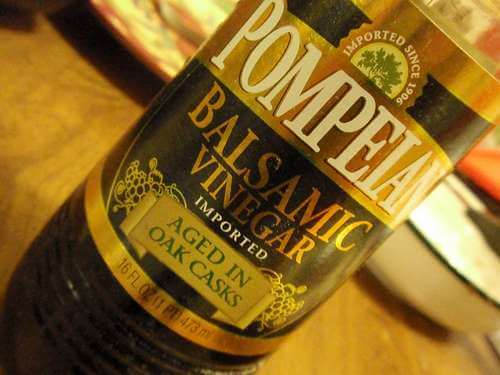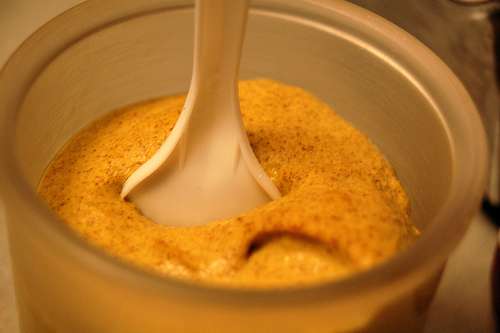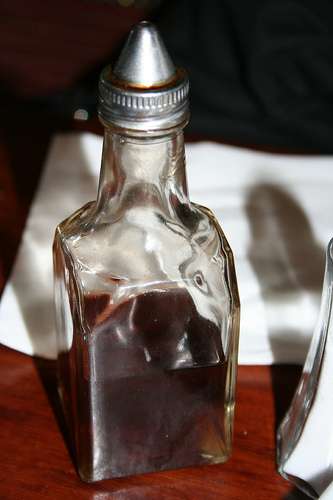How Long Does Mayonnaise Last and How to Tell if It’s Bad?
Got a half-open mayo jar that’s been sitting in the fridge for a few months already and not sure if it’s still okay to eat? How long does mayonnaise last?
Or yours looks or smells weird, and you don’t want to risk food poisoning. How do you tell if mayo is bad?
Sounds familiar? Let’s dive right in.
How Long Does Mayonnaise Last?
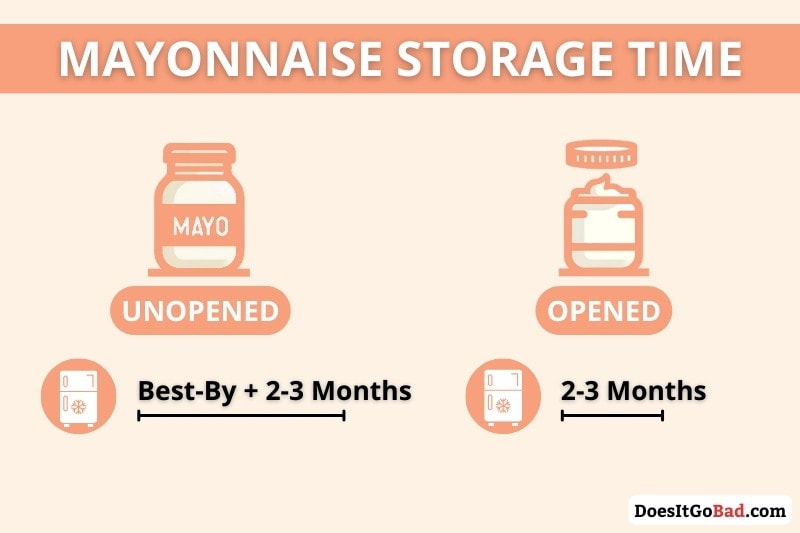
An unopened mayonnaise jar lasts at least 2 to 3 months beyond the printed date. Once opened, the condiment should keep for at least 2 to 3 months if sealed tightly and refrigerated.
An unopened jar has quite a long shelf life, similar to other condiments such as ketchup or mustard. It stays safe for a long time because it contains preservatives (such as salt and lemon juice or vinegar), and the whole thing is tightly sealed and pasteurized, ensuring safety.
What’s important is that pretty much all commercial mayonnaise jars out there last quite a while. Even those with a short and natural-looking ingredients list, like this Hellmann’s Real Mayo.
Does that mean that you’re free to use “expired” mayonnaise? Let’s talk about that.
Expired Mayo
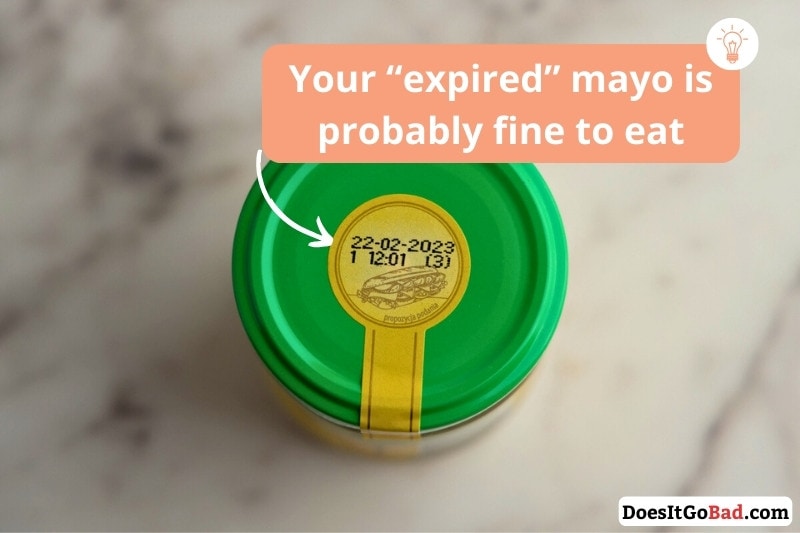
Commercial mayonnaise doesn’t go bad easily and typically lasts for months beyond the best-by date on the label. That means your “expired” mayo is likely perfectly fine to use if stored properly.
Even though chances are it’ll still be fine even if it’s a couple of months past its “expiration” date, check it for spoilage signs before digging in.
After Opening
An opened mayonnaise should retain quality for at least 2 to 3 months in the fridge. Make sure the jar is sealed tightly and that you always use clean utensils. Don’t freeze mayonnaise because it can break the emulsion and ruin the texture.
That’s what authoritative sources such as FSIS (Food Safety and Inspection Service) recommend.
Now, your everyday experience may vary a bit.
I’ve stored half-open commercial mayonnaise for months in the fridge ((you should refrigerate mayo)[link do you refrigerate mayonnaise]) with little change in quality. And I’m pretty sure you’ve done the same.
Store-bought opened mayo doesn’t suddenly start to deteriorate once it hits the 2- or 3-month mark. Sure, its quality will slowly decline, but even if it’s been opened for half a year, it’ll usually taste fine.
The way you should go about it is to pay attention to spoilage signs and quality. If you notice any signs of spoilage (which we discuss below), or you’re no longer happy about its quality, toss the mayo. Otherwise, feel free to use it even if it’s been open for like nine months.
Homemade Mayo
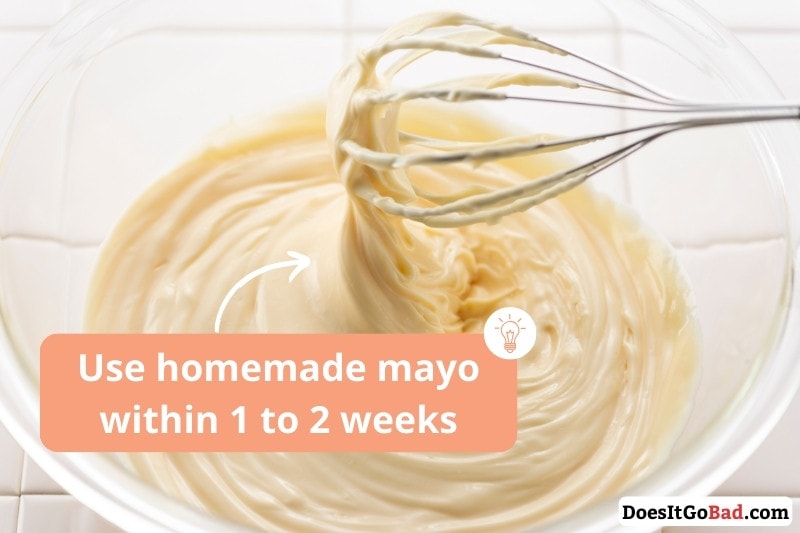
The USDA suggests you should use your homemade mayonnaise within 4 days, but it should stay safe for one to two weeks if you keep it sealed and refrigerate at all times.
Some recipes even claim that homemade mayo keeps for much longer if you use the right ingredients, like this article suggesting a shelf life of 2 months.
Long story short, it’s impossible to say how long your homemade mayonnaise will last. There’s all this talk online about how pasteurized eggs make commercial mayo last longer, which is probably true, but that doesn’t help much, either.
So, instead of trying to find the “true” shelf life of homemade mayo, it’s better to go with a conservative assumption that will keep you away from foodborne illnesses. And that’s why I suggest discarding yours if it’s been in the fridge for over 2 weeks. Better safe than sorry.
How to Tell if Mayonnaise Is Bad?
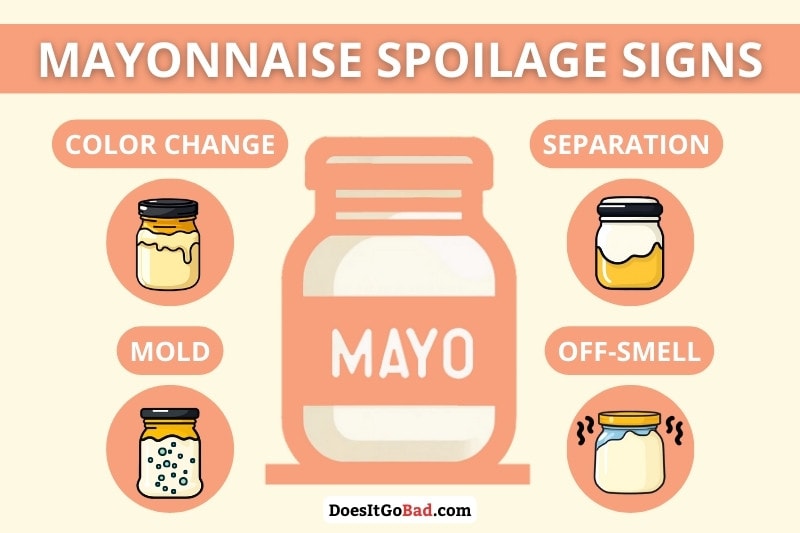
Your mayonnaise is bad if it has mold growing on it. It’s also spoiled if its color has changed to a darker shade of white or is now yellow or even brown. Besides that, check for separation, an acidic or putrid smell, or a bitter flavor.
That’s mayo spoilage 101.
Now, let’s tackle each spoilage sign in more detail:
- Mold. Moldy mayo is bad; no ifs or butts.
- Color change. If your mayo is yellowing or browning, that’s a sure sign it’s gone rancid. It probably won’t make you sick, but it likely tastes pretty nasty. Toss it.
- Separation. Mayo stored at a too-high temperature or for too long may separate. Separated mayonnaise isn’t necessarily spoiled, but you should throw it out for quality reasons.
- Off smell. If your mayo smells acidic, putrid, or like crayons, it’s most likely rancid. Again, it most likely won’t cause food poisoning, but you definitely won’t be happy about the experience.
- Off taste. If everything looks and smells okay, give your old mayo a taste before using it in your potato salad or salad dressing. And open a new jar if it’s not what you’re looking for.
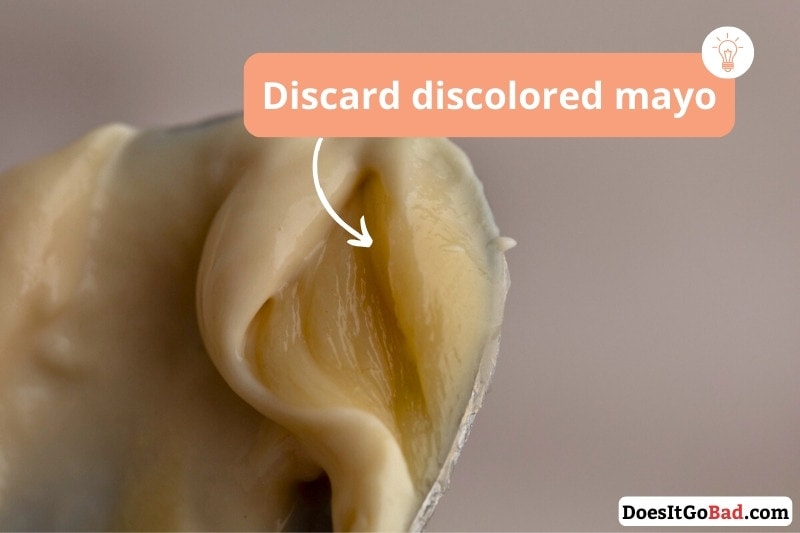
If you notice anything else that’s off, discard the condiment. Better safe than sorry.
FAQ
How Long Does Miracle Whip Last?
Miracle Whip lasts at least a couple of months beyond the date printed on the label. After opening, it retains great quality until the date printed on the label or for at least 1 to 2 months if you open it past its date.
In other words, Miracle Whip is no different than your regular mayonnaise, at least in terms of shelf life and keeping quality for an extended period.
As usual, watch out for an off smell, mold, and other typical mayo spoilage signs.
Rotten Records: Share Your Snap!
Caught some food past its prime? Upload your photo to “Rotten Records” and help others spot the signs of spoilage. Every image makes our food community safer and more informed!
